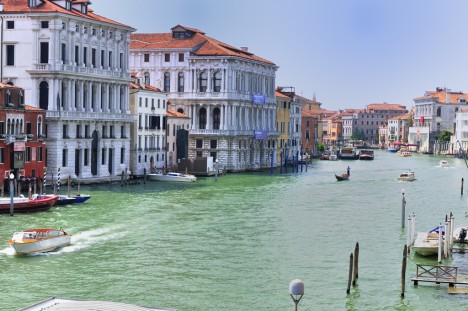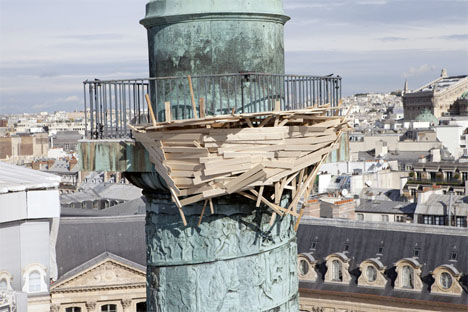 |
Sony has detailed its upcoming version 4.0 firmware for its VENICE motion picture camera system, adding optional High Frame Rate (HFR) license speeds for shooting at up to 120fps at 4K 2.39:1 and 60fps at 6K 3:2. When using anamorphic lenses, the VENICE cameras can also be used to shoot at 75fps at 4K 4:3 and 110fps at 4K 17:9. According to Sony, these new frame rate options are ideal for commercial 4K/6K productions and movies, as well as VR work.
Joining the HFR recording is upgraded remote control functionality with Sony’s 700 Protocol, ‘giving filmmaker’s greater flexibility,’ according to the company. As well, firmware v4.0 brings support for ZEISS eXtended Data and Cooke’s most recent /i3 metadata system, progressive HD-SDI output in 25p and 29p, an extended Mask+Line setting in the system’s Frame line set-up, plus there will be selectable functions for the DVF-EL200 viewfinder’s assignable buttons.
The version 4.0 firmware update will be free; both it and the optional High Frame Rate license will arrive in June.
January 31, 2019: Sony will be upgrading the capabilities of its next-generation motion picture camera system, VENICE, by introducing High Frame Rate (HFR) shooting, advanced remote-control functionalities and Cooke/i3 and Zeiss extended metadata support, as part of its latest firmware update. Following the recent release of VENICE’s firmware Version 3.0 and the upcoming launch of its Extension System (CBK-3610XS), which was developed in collaboration with James Cameron’s Lightstorm Entertainment and is currently being used to shoot the AVATAR sequels, the latest upgrade will offer filmmakers even greater creative freedom, flexibility and choice.
The new optional High Frame Rate license allows VENICE to shoot at speeds of up to 120fps at 4K 2.39:1, and 60fps at 6K 3:2 as well as up to 110fps at 4K 17:9 and 75fps at 4K 4:3 with anamorphic lenses. The new additional frame rates are particularly well-suited for drama, movie and commercial productions in 4K and 6K, as well as productions at 50/60p in 6K and VR productions using large viewing angle of 6K 3:2 in 60p.
All High Frame Rates support X-OCN recording including X-OCN XT* implemented from Ver.3.0 and High Frame Rate up to 60fps support XAVC 4K and ProRes recording.
“At Sony, we pride ourselves on working closely with our customers and partners to create solutions that enable modern filmmakers to bring their vision to reality just the way they intend to. In fact, High Frame Rate shooting was a feature that was frequently requested by our customers. We listened to their feedback and are excited to now offer this feature to all new and existing VENICE users,” explained Theresa Alesso, Vice President and Head of CineAlta for Sony Electronics. “Last year at Cine Gear Expo, we announced that Version 4.0 will include 120fps in 2K. However, we are excited to announce today that, as a result of the hard work of our engineering team, Version 4.0 will now include 120fps in 4K. With firmware Version 4.0, our state-of-the-art VENICE will become even more powerful, fortifying its position as the go-to solution for cinematographers who want to create stunning imagery and capture emotion in every frame.”Additionally, Version 4.0 of the VENICE firmware will introduce:
- 700 Protocol – A control protocol developed by Sony to connect VENICE to a remote-control unit (RM-B750 or RM-B170) and an RCP-1500 series remote control panel, giving filmmakers greater flexibility in bringing their visions to life. Further expanding on the camera’s existing remote-control capabilities, the VENICE now offers paint control, iris control, recording start/stop, clip control, and more. The upgraded remote-control function also adds new workflows to extend VENICE’s use in multi-camera and live production settings, such as live concerts and fashion shows.
- Support for Cooke’s /i third generation metadata Technology, /i3 and ZEISS eXtended Data technology (based on Cooke /i Technology) – Extended lens metadata can now be embedded straight into a RAW/X-OCN/XAVC file and HD-SDI output without the need for additional metadata equipment. The new function allows distortion and shading caused by supported lenses to be easily rectified, significantly reducing post-production costs.
Further features include an extended Mask+Line setting in the Frame line set-up, selectable functions for the assignable buttons of the DVF-EL200 viewfinder and pure Progressive HD-SDI output in 25p and 29p.
Both the free upgrade to firmware Version 4.0 and the optional HFR license will be available in June 2019.
To learn more about VENICE, please join Sony at BSC Expo 2019 in Battersea Evolution, Battersea, London at stand 545 or visit pro.sony/products/digital-cinema-cameras/venice.
*Excluding 6K 3:2 50p/60p
Via: PixelShift
Articles: Digital Photography Review (dpreview.com)


























You must be logged in to post a comment.